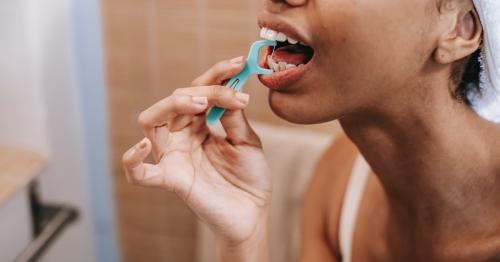15 Essential Invisalign Facts You Should Be Aware Of

The decision to opt for Invisalign or traditional braces should be made after a thorough evaluation of your specific dental needs. Your dentist or orthodontist will assess factors such as the severity of misalignment, bite issues, and your overall oral health. They may discuss the pros and cons of both options, including treatment duration, maintenance, and cost.
It's also essential to remember that the choice often extends beyond aesthetics. While Invisalign offers a more discreet and comfortable option for many adults, traditional braces can be more suitable for complex cases requiring significant correction. Your oral healthcare provider will consider all these factors to provide you with a tailored recommendation that aligns with your goals for a healthier, more beautiful smile.
Ultimately, the path to straighter teeth and improved oral health starts with an informed discussion with a dental professional. They will guide you toward the most suitable treatment plan, ensuring you make a confident choice for your orthodontic journey.
While conventional braces may be necessary in difficult situations requiring severe misalignment or major oral surgery procedures, Invisalign is a fantastic choice for mild to moderate orthodontic disorders.
Invisalign: Suitable Cases and Limitations
The complex mechanics of conventional braces can offer more accurate control and correction in situations when teeth are excessively rotated or tipped. Even the most difficult tooth misalignments can be successfully treated by orthodontists because of their ability to alter wires and brackets.
It's crucial to remember, though, that Invisalign technology is also constantly improving. In certain cases, orthodontists can still treat these difficult problems by utilizing Invisalign in addition to traditional orthodontic methods. To accomplish the desired effects, this strategy may include the use of attachments or extra dental tools.
The decision between Invisalign and conventional braces ultimately comes down to the individual's particular dental requirements and objectives. A skilled orthodontist can help you choose the best course of action and ensure that you're comfortable and effective during your treatment.
Key Facts About Invisalign
Fact #1: Invisalign braces generally come at a higher cost than traditional braces due to more expensive laboratory fees paid to Align Technology.
Fact #2: While Invisalign technology continues to advance, complex orthodontic cases may not be effectively treated with aligners.
Fact #3: Invisalign braces offer a similar level of discomfort as metal braces, as both apply consistent pressure to your teeth.
Fact #4: Treatment duration is typically similar for both Invisalign and traditional braces.
Fact #5: Invisalign is a tool for straightening teeth, and the success of treatment relies on the orthodontist's skill.
Fact #6: Orthodontists or dentists trained in Invisalign treatment tend to achieve successful outcomes.
Fact #7: Over 1,000,000 patients worldwide have chosen Invisalign, with the number continually growing.
Fact #8: Invisalign trays are removable, allowing for regular eating, drinking, brushing, and flossing.
Fact #9: Invisalign eliminates the need for wires and metal brackets, reducing the need for office adjustments.
Fact #10: Invisalign controls both the force and timing of teeth movement based on your personalized treatment plan.
Fact #11: Invisalign aligners, made from thermoplastic material, are custom-designed to move teeth gradually.
Fact #12: Select your Invisalign provider based on your comfort and confidence in their expertise.
Fact #13: Many patients require retainers post-Invisalign treatment to maintain results.
Fact #14: Consistent wear of Invisalign aligners for 20 to 22 hours daily is essential for desired outcomes.
Fact #15: Invisalign aligners are changed every 2 weeks, with more complex movements requiring up to 3 weeks and less complex movements needing 10 days of wear.
Invisalign presents a compelling option for orthodontic treatment.
Moreover, Invisalign Offers Fewer Dental Appointments
If you prefer fewer dental appointments, Invisalign is an excellent choice. Typically, progress check-ups occur every six weeks, aligning with each set of three trays in most treatment plans.
Moreover, there's no need for orthodontist visits to tighten braces or adjust bands since you manage your tray progress at home. Simply switch to a new tray every two weeks, following your treatment plan recommendations.
If you're seeking a braces-free path to enhance your smile, reach out to us at Irvine Spectrum Dental Clinic to get the best dental treatment from the top-notch dentist in Irvine.
Post Your Ad Here
Comments